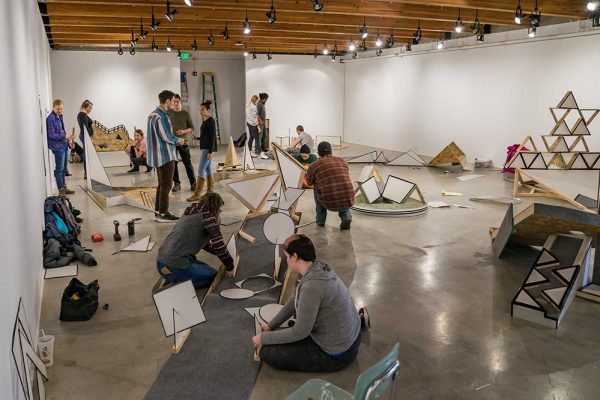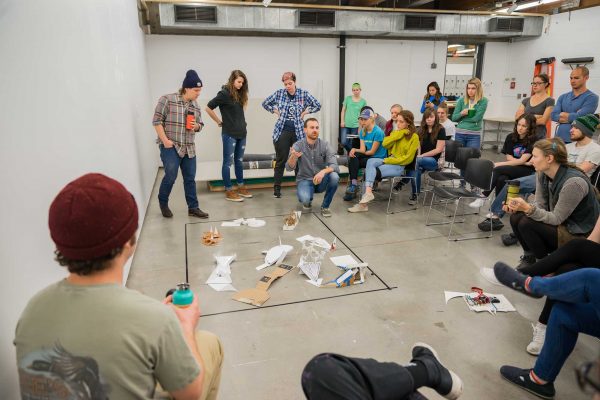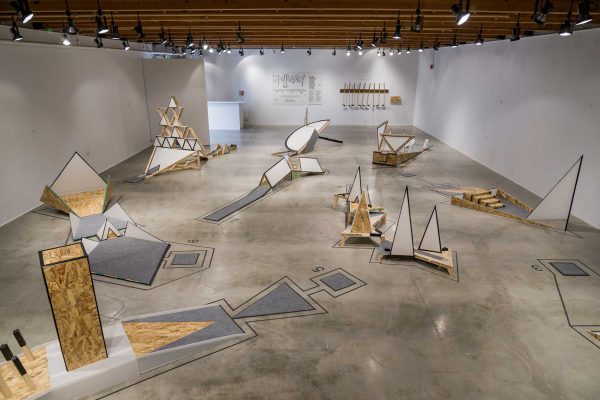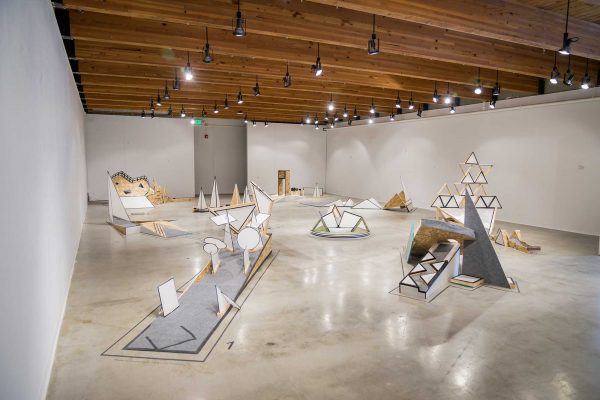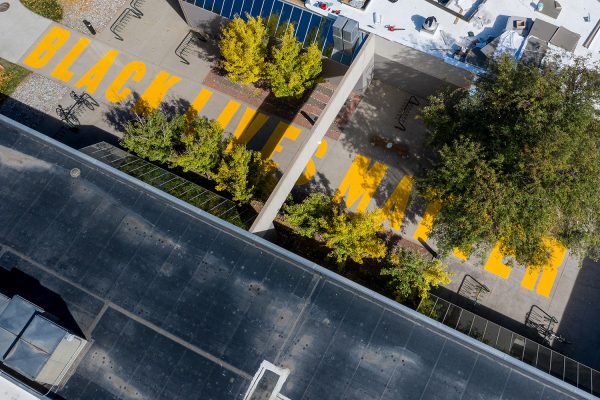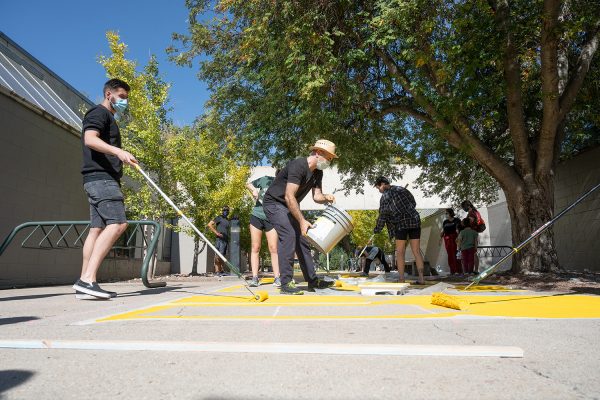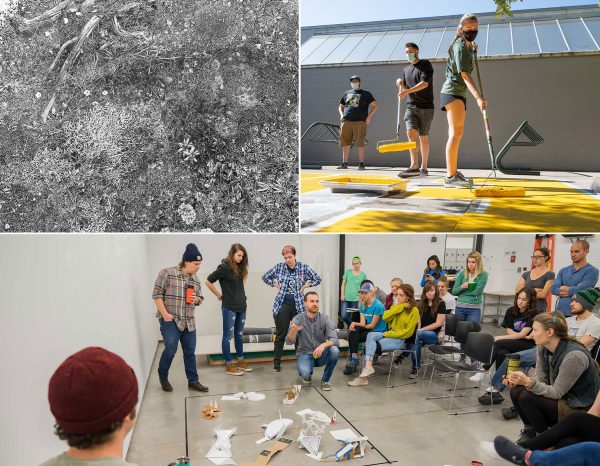
In the Department of Art and Art History, together, we discover, imagine, engage, solve, and express. We make, teach, and interact with art that helps us explore and challenge our world.
Together, we advance the human experience.
Discover
“Mulligan” is a culmination of a studio-intensive, interdisciplinary workshop. In conjunction with Zero Craft Corp, a an experimental, project-based art and design studio, 36 students across 9 teams collaborated on the design and fabrication of a unified, functional mini golf course in the Clara Hatton Gallery. Through iteration, critique, and collaborative problem solving, undergraduate and graduate students from the Department of Art and Art History discovered how to create a playful experience with a limited materials, form, and time.
Read more about the Zero-Craft Workshop from 2019.
Express
The Art Education program at CSU regularly hosts Artistic Abilities, a nonprofit organization committed to creative expression for all, serving individuals with or without disabilities in the Fort Collins area. Their philosophy is to help build community and to foster socialization among artists. Together, the two programs create an environment for individuals with disabilities to express themselves through art-making practices.
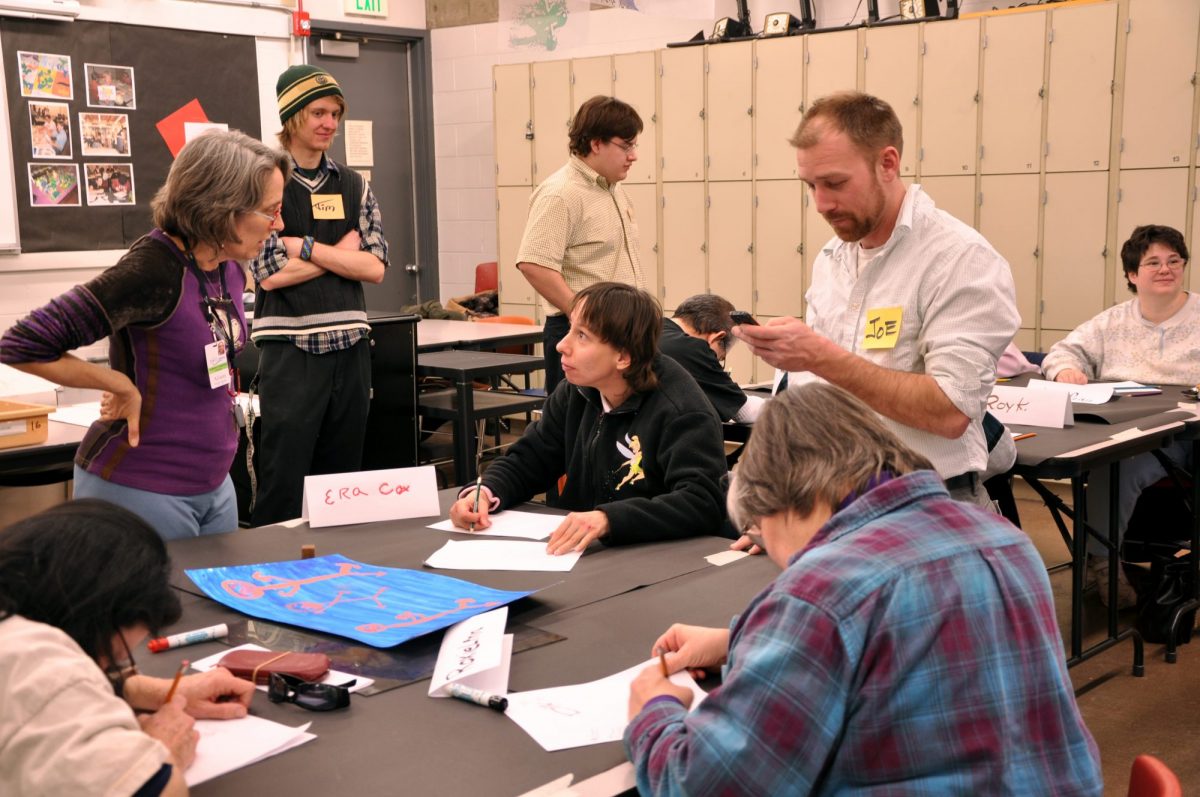
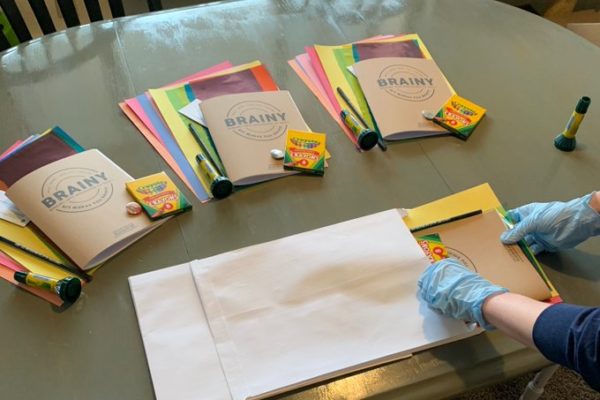
Imagine
BRAINY (Bringing Arts Integration to Youth) is a program of the Gregory Allicar Museum of Art, in collaboration with the Department of Art and Art History and the School of Music, Theatre, and Dance. Since 2009, BRAINY has provided opportunities for students from Title 1 schools to learn about the role the arts play in our community and culture through interactive sessions in visual art, music, dance, and theatre. When the COVID-19 pandemic canceled in-person gatherings, BRAINY reimagined their program by creating art kits for students to use at home in lieu of a BRAINY program school trip.
Read more about the BRAINY program and a recent fundraising effort by CSU alumni to support it.
Engage
October 2020 was the launch of the first Engaged Art Walk, an arts-based community building project and an outdoor exhibition space that features rotating installations to integrate art, society, and education. In collaboration with the Black African American Cultural Center and the Ethnic Studies department, “Black Lives Matter” was emblazoned in yellow block lettering on the ground outside of the Visual Arts Building. The installation is a form of street art offering an ephemeral, direct, and timely means for artists to make bold statements and engage in conversation with a broad audience by becoming part of the everyday visual landscape.
Read more about the Engaged Art Walk and series of events and art projects integrating art, education and civic engagement.

Cedra Wood, Plot (Kluane), 45”x45”, Graphite on paper
Solve
Reclaiming post-extraction landscapes is usually practical and economical, directed by extraction companies, government sponsors, and the engineers and scientists working with them. Opening this summer at the Gregory Allicar Museum of Art, Reclamation: Recovering Our Relationship with Place, curated by Associate Professor of Painting Erika Osborne in the Department of Art and Art History as part of Extraction: Art on the Edge of the Abyss, asks how artists—alone or in concert with others—might instead solve issues of reclamation in strange or ambitious ways. “Artists are visionaries…[that] can challenge cultural preconceptions and even our best logic,” Osborne writes. The artists featured in Reclamation use this divergent framework in painting and drawing, performance, video, sculpture, and installation to present forward-thinking perspectives on a hope-filled, post-extraction world.
Learn more about the upcoming exhibition Reclamation: Recovering Our Relationship with Place at the Gregory Allicar Museum of Art.

